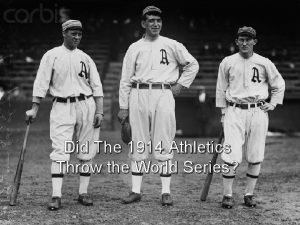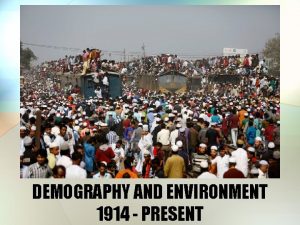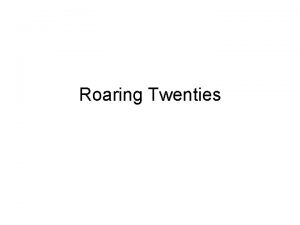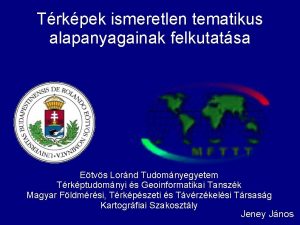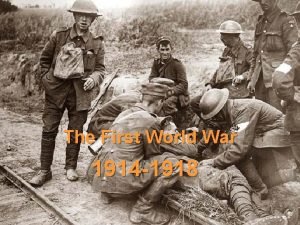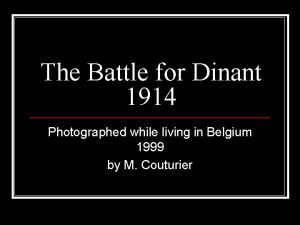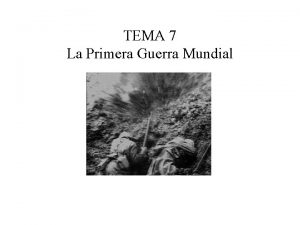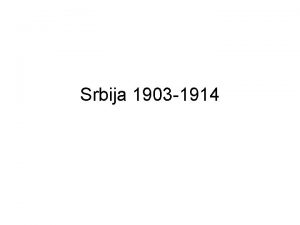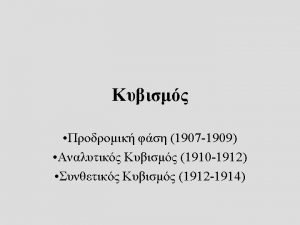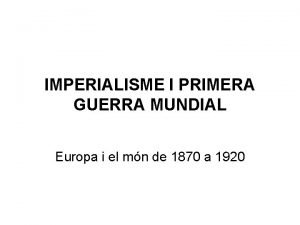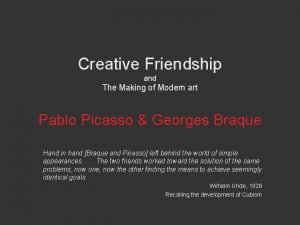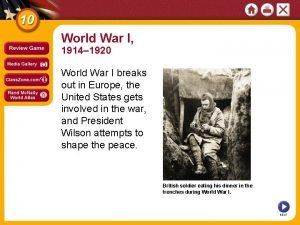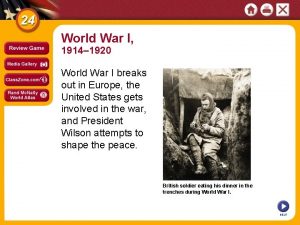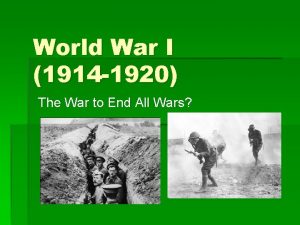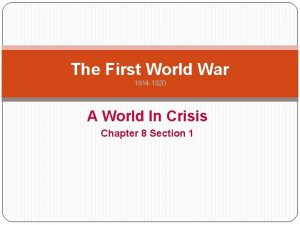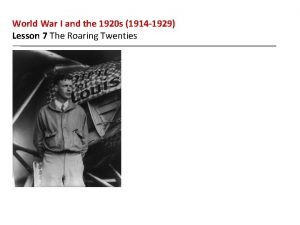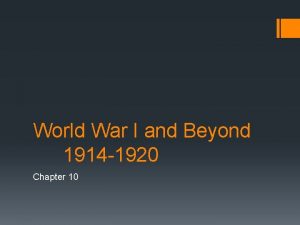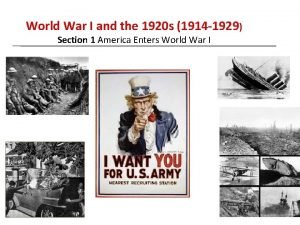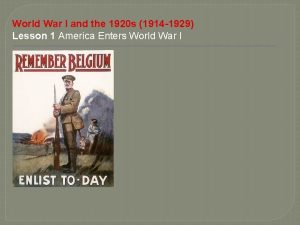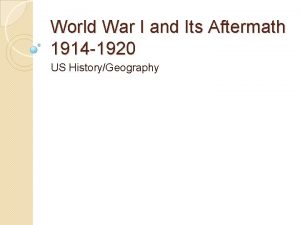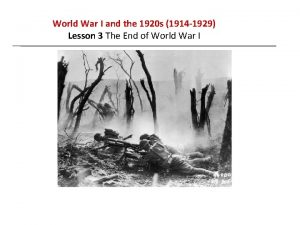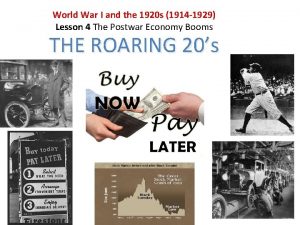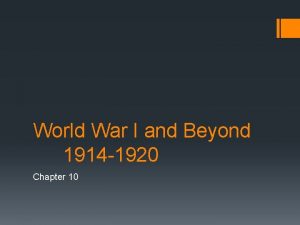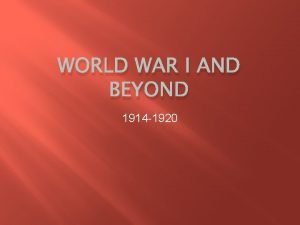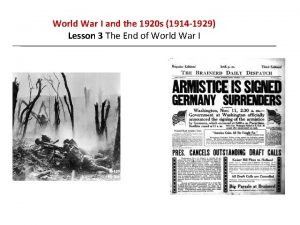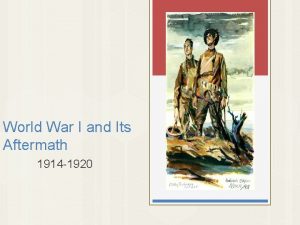World War I and the 1920 s 1914
















- Slides: 16

World War I and the 1920 s (1914 -1929) Lesson 8 The Harlem Renaissance

World War I and the 1920 s (1914 -1929) Lesson 8 The Harlem Renaissance Learning Objectives • • • Analyze how the Great Migration and the philosophies of Marcus Garvey affected African Americans in the 1920 s. Trace the development of jazz and its impact on American society and the rest of the world. Discuss themes explored by writers and artists of the Harlem Renaissance.

World War I and the 1920 s (1914 -1929) Lesson 8 The Harlem Renaissance Key Terms • • Marcus Garvey jazz Louis Armstrong Bessie Smith Harlem Renaissance Claude Mc. Kay Langston Hughes Zora Neale Hurston

Support for Black Nationalism in Urban Areas As a result of World War I and the Great Migration, millions of African Americans relocated from the rural South to the urban North. This mass migration continued through the 1920 s and contributed to a flowering of music and literature. Jazz and the Harlem Renaissance made a lasting impact, not only on African Americans but on the culture all Americans share.

Support for Black Nationalism in Urban Areas • • Migration Creates Opportunities and Challenges The Impact of Marcus Garvey

Support for Black Nationalism in Urban Areas Albert and Mildred Talbert emigrated from Oklahoma to Nebraska in 1914. Their son, Dakota, served in World War I and daughter, Ruth, graduated from the University of Nebraska in 1928.

The Jazz Age It was F. Scott Fitzgerald who called the 1920 s the “Jazz Age. ” However, it was African Americans who contributed the jazz. A truly indigenous American musical form, jazz is a musical form based on improvisation. Jazz musicians creatively recombine different forms of music, including African American blues and ragtime, and European-based popular music. Jazz music was fast, free, loud, rebellious, and fun, so in many ways, it reflected the characteristics and issues of the 1920 s.

The Jazz Age • • A Unique Musical Style Jazz Wins Worldwide Popularity

The Jazz Age Analyze Charts How is the development of jazz related to modern musical genres such as hip-hop and rap?

The Jazz Age Louis Armstrong’s raspy voice and trumpet playing helped promote the popularity of jazz around the world.

The Harlem Renaissance Jazz and blues were expressions of the African American experience. The pain of the African American experience can be heard in the blues, and the joy of that experience in the soaring notes of jazz. The range of such African American musicians as Duke Ellington and Cab Calloway speaks to the varieties of African American life. But in the 1920 s, there were other expressions of African American culture. Novelists, poets, and artists celebrated their culture and explored questions of race in America. This flowering of African American culture became known as the Harlem Renaissance. The Harlem Renaissance helped give a new vocabulary and dynamic to race relations in the United States.

The Harlem Renaissance • • Cultural Movements in Literature and Art The Lasting Impact of the Harlem Renaissance

The Harlem Renaissance African American music legends, including Duke Ellington and Cab Calloway, played regularly at Harlem's many nightclubs.

Quiz: Support for Black Nationalism in Urban Areas What did Marcus Garvey advocate? A. B. C. D. universal black nationalism civil rights for immigrants a mass migration to northern cities collaboration between blacks and whites

Quiz: The Jazz Age Who was known as the “ambassador of jazz”? A. B. C. D. Cole Porter Bessie Smith Louis Armstrong F. Scott Fitzgerald

Quiz: The Harlem Renaissance Whose writing conveyed militant ideologies and political leftism during the Harlem Renaissance? A. B. C. D. Jean Toomer Claude Mc. Kay Langston Hughes Zora Neale Hurston
 Pstuffy bunny
Pstuffy bunny World population in 1914
World population in 1914 Chapter 16 lesson 2 challenges to slavery
Chapter 16 lesson 2 challenges to slavery Demobilization and adjustment to peace 1920
Demobilization and adjustment to peace 1920 In 1914, who controlled the shaded areas on the map?
In 1914, who controlled the shaded areas on the map? Európa térképe 1914-ben
Európa térképe 1914-ben Colonial empires 1914
Colonial empires 1914 Battle of dinant
Battle of dinant Imperialism map 1914
Imperialism map 1914 Balcanes 1914
Balcanes 1914 Topovsko pitanje
Topovsko pitanje πορτογαλεζα
πορτογαλεζα Causes del colonialisme
Causes del colonialisme Svjetska književnost od 1929 do 1952
Svjetska književnost od 1929 do 1952 Hrvatska književnost od 1914 do 1929
Hrvatska književnost od 1914 do 1929 Picasso ma jolie 1914
Picasso ma jolie 1914 Colonial empires 1914
Colonial empires 1914
